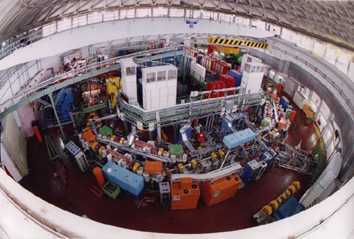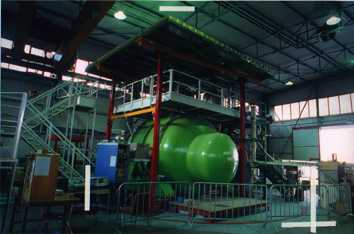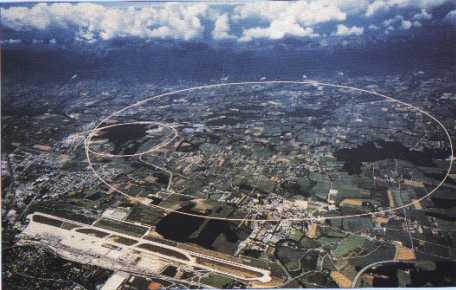

CERN, the European Lab for particle physics, is the world reference center for high energy physics. The laboratory houses the LEP collider for positron-electron collisions up to 200 GeV, 100 GeV per beam. LEP is located in an underground tunnel of 27 km circumference; in the future the tunnel will house the Large Hadron Collider (LHC) for protons of 7000 GeV per beam. Four experiments are working at LEP (ALEPH, DELPHI, L3 and OPAL), and four experiments are in preparation for LHC.
In Hamburg, Germany, is located the DESY Lab, which houses the collider HERA, where protons of 820 GeV collide with electrons (or positrons) of 30 GeV. Three large experiments are in operation at HERA (H1, ZEUS and HERAb).
At the Frascati National Laboratories of INFN the new collider DAFNE started operation with high intensity beams of electrons and positrons of 0.51 GeV per beam. Three experiments (KLOE, FINUDA and DEAR) operate at DAFNE.
KLOE (K LOng Experiment) is looking for differences between matter and antimatter, as detected in the decays of the produced K-mesons. The present universe is composed only of particles. The Big Bang theory assumes that in the early universe there were equal numbers of particles and antiparticles, and that, in a transition phase, a small difference arose between the number of particles and of antiparticles; subsequently all antiparticles annihilated.
At the high energy laboratories many experiments are performed, among which also some in the field of non-accelerator physics. In particular a large effort is presently being made on the detection of gravitational waves, using supercooled antennae at 0.1K (NAUTILUS and AURIGA at Legnaro, Padova) and long interferometers (VIRGO at Pisa).
1) Aerial view of the CERN Laboratory in Geneva, Switzerland.
2) The DAFNE collider at the Frascati National Laboratories of INFN.
3) The supercooled antenna NAUTILUS at Frascati.
